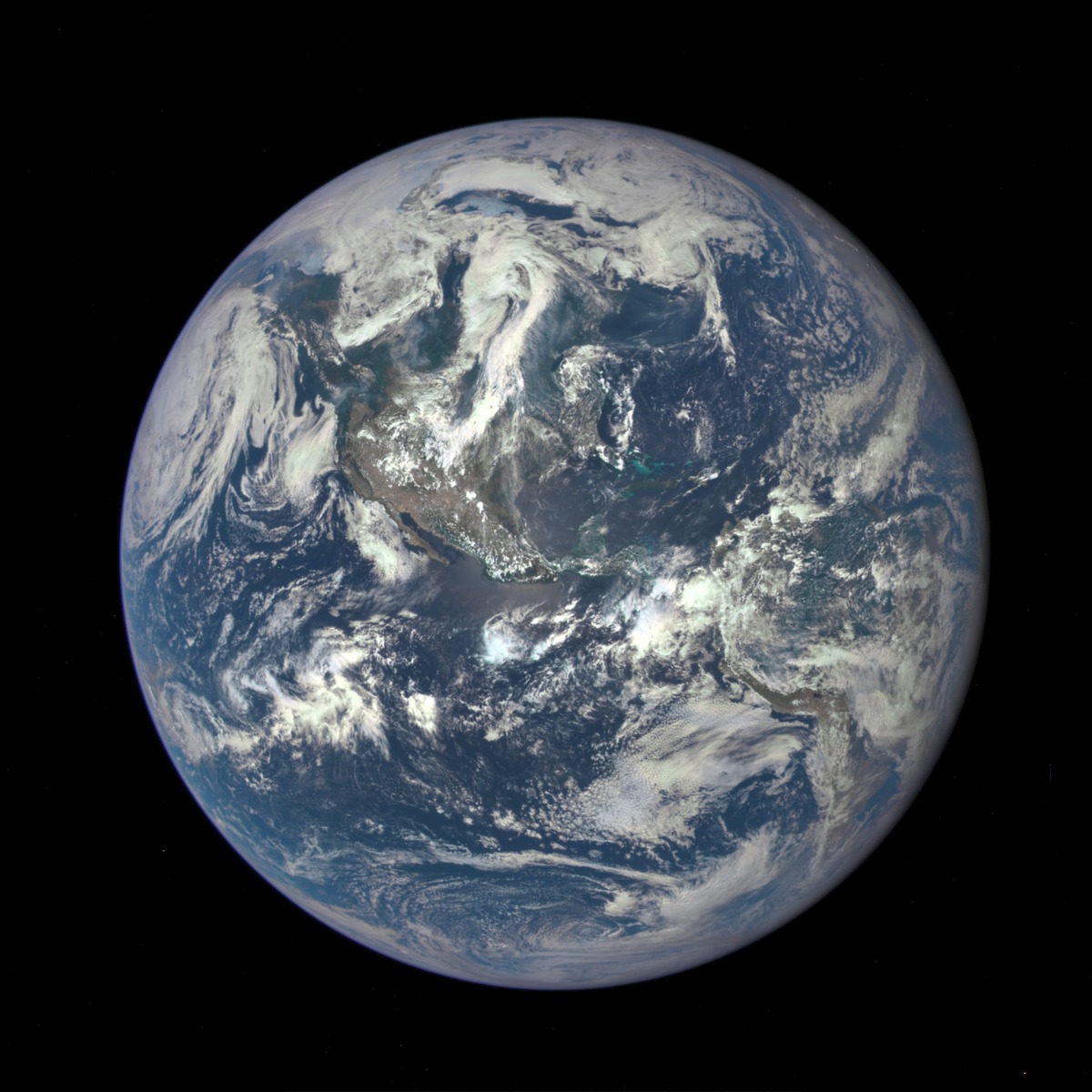A satellite designed to help warn people of space weather hazards has just sent back its first photo of the full sunlit side of the planet shining like a blue marble in the blackness of space.
The Deep Space Climate Observatory (DSCOVR), which launched to space in February, is tasked with checking out the space weather environment in Earth's neighborhood. The satellite should help alert forecasters whenever a solar storm — a mass of charged particles shot from the sun — is rushing toward Earth.
Such storms could affect Earth's electrical grid, temporarily taking out other satellites in space. A credible worst-case scenario could lead to billions in damage in the U.S. alone.
But the spacecraft is also carrying a NASA camera that takes images of the full Earth illuminated by the sun. This photo was taken on July 6, and shows North and South America.
"This first DSCOVR image of our planet demonstrates the unique and important benefits of Earth observation from space,” NASA administrator Charles Bolden said in a statement Monday.
The White House, NASA and the National Oceanic and Atmospheric Administration (NOAA) all promoted the image via their social media channels as well.
“As a former astronaut who’s been privileged to view the Earth from orbit, I want everyone to be able to see and appreciate our planet as an integrated, interacting system. DSCOVR’s observations of Earth, as well as its measurements and early warnings of space weather events caused by the sun, will help every person to monitor the ever-changing Earth, and to understand how our planet fits into its neighborhood in the solar system.”
NASA is planning to release new images taken by the DSCOVR camera every day, about 12 to 36 hours after they are captured. The photos should be uploaded to a website starting in September.
These kinds of "blue marble" photos — images of the entire sunlit side of Earth — have become an iconic staple of space-based photography. One of the most recent blue marble pictures, taken by the Suomi NPP satellite in 2012, also shows North and Central America, but from a closer distance.
The DSCOVR mission — a joint operation of NASA, the U.S. Air Force and NOAA — has been years in the making, and plenty of people, including President Barack Obama are excited about its first "blue marble" photo.
The spacecraft that would eventually become DSCOVR was initially called Triana, but that mission was cancelled in 2001. Politics and cost overruns got in the way of the much-needed Earth-observing satellite, which was sometimes called "GoreSat" due to Al Gore's advocacy for the mission. Eventually, the satellite was taken out of storage and reborn as DSCOVR.
Gore has long-championed the need for a satellite that consistently beams back images of the full Earth as seen from space, and with this mission, he's getting his wish.
Images from the NASA camera should produce more than just pretty pictures. Scientists can use these photos to "measure ozone and aerosol levels in Earth’s atmosphere, cloud height, vegetation properties and the ultraviolet reflectivity of Earth," NASA said. The space agency will also be able to use data collected by the camera to create a map of volcanic ash on the planet.
"The images clearly show desert sand structures, river systems and complex cloud patterns," Adam Szabo, DSCOVR project scientist said in a statement.
"There will be a huge wealth of new data for scientists to explore."
Fuente: mashable.com
